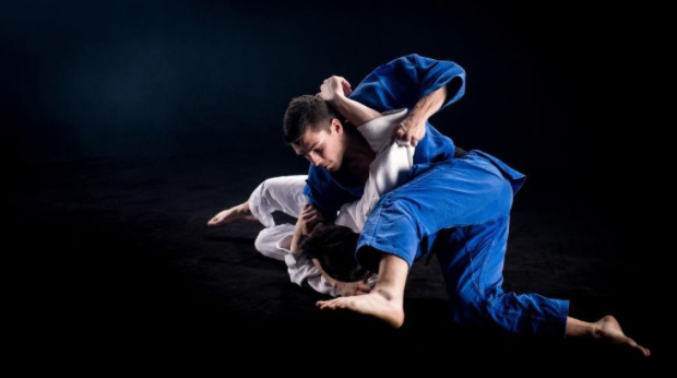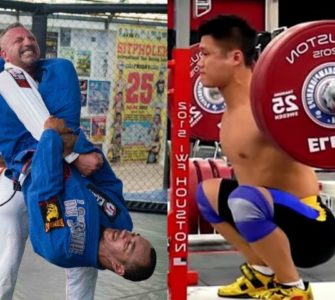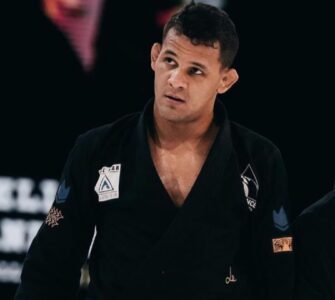Any type of fitness training can be daunting for the first-timer, be it a plank routine or a more rigorous cardio routine. And fighting does add a different challenge to it – you have to be fast and think on your feet. To be precise, in professional fighting, both your mind and body are at play. You need proper fitness and tricks to sync your body and mind – one little error in assessing your opponent’s next move, and you will be flat on your back before you even know it.
When you want to learn professional combat, you have to follow some rules and etiquette, and let us tell you, it’s not just limited to the initial bowing to your opponents. Jiu-Jitsu is all about toppling your opponent to the ground, no matter how big or strong the opponent is. So before you thrust yourself into the world of Brazilian Jiu-Jitsu (BJJ), you need to prepare yourself by learning the following tips.
Take Up Training Only When You Can
One of the common rookie mistakes for beginners is taking up more than they can chew off. Decide on a steady pace from the very beginning, know your stamina and schedule your training session accordingly. Scheduling a BJJ training 2-3 times a week will set you up for steady progress. However, if you feel you can only manage one training session per week, you can do that too and follow a slower progress.
Wear Clean Uniforms
Sports like karate and BJJ maintain strict uniform protocol. Maintain them as religiously as you can. A heavy training session can make you sweat, so you need to regularly wash your uniform. Even if you don’t sweat, rolling on the gym mat can cause you to come into contact with human sweat and bacteria, so you need to wash your BJJ uniform.
It is better if you can manage at least two sets of uniforms for your training; that way, you can rest assured that you have one fresh set while the other one is in the washer. You can check out these picks by the MMA Guru for suitable BJJ uniforms.
Keep Your Nails Clean and Short
While you can practice karate by yourself, BJJ requires sparring with a partner. And that ultimately leads to being in direct contact with your opponent. To minimize the risk of hurting your opponent during the process, you should cut your toenails and fingernails short before the training session. Practice the good habit of cleaning your nails so that bacteria can’t accumulate under them.
Don’t Expect To Grasp All At Once
Learning BJJ requires time. There are a lot of techniques involved, and you can only learn them through rigorous practice. So don’t expect to know it all from your first day. Be patient with your learning and learn through experience.
While a lot of technique will be difficult to understand or remember without context, you will get a better hang of it once you gather more experience. Don’t get frustrated if you feel stuck at one stage. Move on to the next stage if you think it is dragging you behind.
Don’t Slack Out Once You Are Out Of the Gym.
That’s another mistake for the rookies. They expect to learn everything at the mat in front of the instructor, but once they step out of the gym, they hardly follow through with the training. BJJ requires a high level of stamina and flexibility, which you can not have if you don’t exercise outside your training schedule.
Simply maintaining a light exercise routine outside the gym will help you tremendously to maintain your stamina on the mat. If you don’t possess flexibility, you will be prone to injury. A simple twist or turn of joints can make you render unbalanced.
Follow Drilling As Religiously As You Can
We know how boring BJJ drilling can be; sparring is more fun and quick. However, drilling provides you with the basics that prepare you for sparring. Even if it seems tedious, drilling lets you program different techniques as a muscle memory, which will be crucial for the actual sparring. If you follow the drilling session the right way, your brain will send a proper reflex signal to your body. You don’t have to think about a proper response to your opponent’s action. It will come naturally to you.
Learn When to Tap
To a beginner, tapping might seem like a sign of weakness or defeat. But this will be the first thing that will be drilled into your mind in your BJJ training. Tapping is vital for avoiding injury. Before you feel the pain creeping up on you or feel a weird sensation to your joint, you need to tap out of that spar.
In arts like BJJ, Staying safe is far more important than winning or displaying your worth. Don’t let your ego refraining you from tapping out of an injury-inducing hold.
Practice Techniques With Others
You will always have someone available in your training session who eagerly waits for partnering to sharpen their skill. However, be precise in your practice. Practice your strong moves with upper belt opponents and practice new techniques with lower belt opponents. That way, you will get to sharpen your weak points and develop new moves.
Prepare For the Struggle
We know it might sound cliché to you, but to be fair, learning Brazilian Jiu-Jitsu would be hard on you if you don’t build up your resilience. However, this is not implied to scare you off the art, it is a reminder that Brazilian Jiu-Jitsu is no cakewalk. Don’t expect that you will be able to floor your opponents in your very first fight. It is not about winning against others – it is about improving yourself.
With any type of competition, a certain degree of ego comes creeping into our minds. Don’t get disheartened with failure or even grow egotistical if you turn out to be better or stronger than others. Both can be destructive for your learning.
The Bottom Line
The most crucial factor for learning BJJ is to be consistent. To some, Brazilian Jiu-Jitsu is like a religion. While you might not have that level of dedication as a beginner, try to follow some level of consistency in your training. Whatever extent of practice you do, maintain it regularly; don’t get sidetracked halfway through it. While it might take years to graduate to a different belt level from the beginner’s white belt, you will pick on lots of lifelong learning along the way.


















